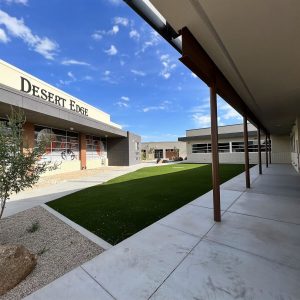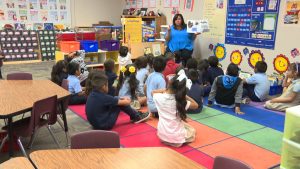- Slug: BC-CNS-Teacher Shortage. 660 words.
- Photos available.
By Alex MacDonald
Cronkite News
WASHINGTON – A few weeks into last school year, 30% of teacher positions in Arizona remained unfilled. The shortage persists, but there are signs of improvement.
Tucson Unified School District currently has 164 classroom openings – down from 300 at the same time last year. Deer Valley Unified School District is close to fully staffed. Tempe Union High School District has just one opening to fill compared to five at this time last year.
“We have been more successful this year than we were last year,” said Dawn Anderson, director of human resources at Flagstaff Unified School District, which employs about 600 certified teachers and has only eight openings still to be filled.
Low pay is one of the many challenges when recruiting teachers.
The starting salary for teachers in Arizona is $44,124, according to the National Education Association. That’s 21st in the nation – above average.
But the average salary is $60,275, which is 32nd.
That’s $9,000 below the national average – and far below the minimum living wage in much of the state. In Maricopa County, for instance, that’s $79,147 for a single parent with one child, as calculated by the left-leaning Economic Policy Institute.
“We’re getting paid so little and asked to do a lot,” said Rikki Acosta, the social-emotional learning coordinator at Maryvale Preparatory Academy, a charter school in Phoenix.
One of the ways Arizona schools cope with teacher shortages is to take away planning periods – that is, adding another class to a teacher’s workload.
Educators call that a Band-Aid that accelerates burnout and robs teachers of unpaid family time.
“It’s hard, because they don’t get a break in their day and they don’t have time to plan,” said Gretchen Hann, the principal at Desert Edge High School in Goodyear. “Then they have to take everything home and they’re spending their nights and weekends getting prepared.”
At the start of last school year, there were 2,229 teaching vacancies across 131 districts in Arizona, according to a survey by the Arizona School Personnel Administration Association (ASPAA).
“It’s scary. We’ve started the year without teachers,” said Hann.
Arizona has implemented a number of programs to mitigate shortages and boost retention.
The Arizona Teachers Academy created by the Arizona Board of Regents, which oversees the state’s public universities, forgives student loans in exchange for a commitment to teach in K-12 schools.
The 2023 annual report showed 3,255 students enrolled in the program, up 14-fold since 2018. But the state slashed the budget in half for the 2025 fiscal year. The cuts will make the program harder to access and will increase the waitlist.
Districts also use alternative educator programs to fill teaching positions.
These programs let college graduates teach for two years while preparing to obtain an Arizona teaching certificate.
“The districts that are doing that are building a teacher pipeline that we would not have had without it,” said Justin Wing, data analyst at ASPAA and assistant superintendent of human resources at Mesa Public Schools, the state’s largest school district.
Arizona State University has the Next Education Workforce project, which promotes alternatives to the traditional one teacher, one classroom staffing model.
Instead, it uses a team approach, with teachers dividing duties based on their strengths. For example, one teacher might handle parent-teacher conferences, while another would focus on data-driven lessons.
Districts are also addressing vacancies by recruiting foreign teachers. A J1 visa allows people who hold a teaching certification to teach in the United States for three years, with an option to extend for two more years. Processing time can complicate this approach, though, and there is often a lag between when a teacher is hired and when they can start.
“We’re going to have some arriving this month, some in August, but some are about 10 weeks out,” said Jennifer Kortsen, spokesperson for the Casa Grande Union High School District, which expects about 25 teachers in its J1 program in the upcoming school year.
For more stories from Cronkite News, visit cronkitenews.azpbs.org.


